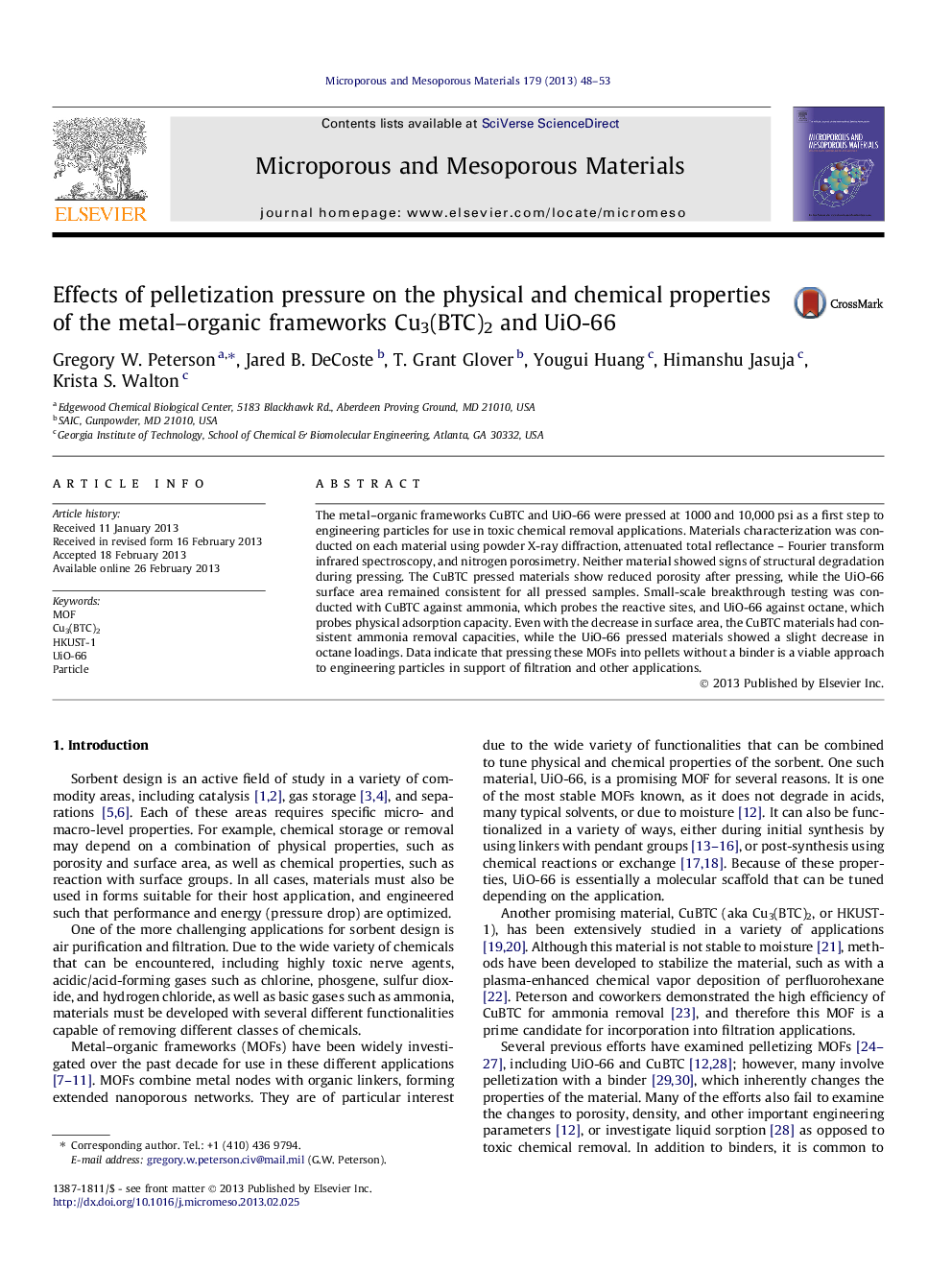| کد مقاله | کد نشریه | سال انتشار | مقاله انگلیسی | نسخه تمام متن |
|---|---|---|---|---|
| 73463 | 49059 | 2013 | 6 صفحه PDF | دانلود رایگان |

The metal–organic frameworks CuBTC and UiO-66 were pressed at 1000 and 10,000 psi as a first step to engineering particles for use in toxic chemical removal applications. Materials characterization was conducted on each material using powder X-ray diffraction, attenuated total reflectance – Fourier transform infrared spectroscopy, and nitrogen porosimetry. Neither material showed signs of structural degradation during pressing. The CuBTC pressed materials show reduced porosity after pressing, while the UiO-66 surface area remained consistent for all pressed samples. Small-scale breakthrough testing was conducted with CuBTC against ammonia, which probes the reactive sites, and UiO-66 against octane, which probes physical adsorption capacity. Even with the decrease in surface area, the CuBTC materials had consistent ammonia removal capacities, while the UiO-66 pressed materials showed a slight decrease in octane loadings. Data indicate that pressing these MOFs into pellets without a binder is a viable approach to engineering particles in support of filtration and other applications.
Figure optionsDownload as PowerPoint slideHighlights
► The metal–organic frameworks CuBTC and UiO-66 were pressed into tablets.
► Materials were crushed and then characterized for differences in properties.
► CuBTC exhibited decreased porosity, but ammonia performance was consistent.
► UiO-66 showed no signs of degradation, but octane performance decreased slightly.
► Pressing without a binder is a feasible approach for MOF preparation.
Journal: Microporous and Mesoporous Materials - Volume 179, 15 September 2013, Pages 48–53